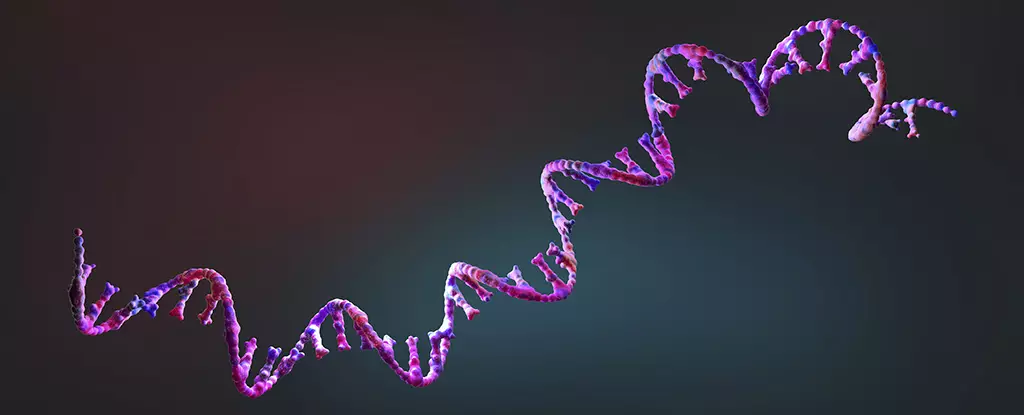The emergence of life on Earth represents one of the most captivating enigmas in the scientific community. For decades, researchers have grappled with the question of how simple molecules could coalesce to give rise to intricate structures such as RNA (ribonucleic acid)—an essential component of all known life forms. Recent advances in laboratory simulations of early Earth conditions are shedding light on how the first molecular interactions may have occurred, providing new insights into the mystery of life’s origins.
In a groundbreaking initiative led by a team of scientists from the Technical University of Munich, experiments have been designed to mimic the primordial environment of Earth—a setting where simple, highly reactive molecules could exist. These researchers sought to answer a pivotal question: what mechanisms enabled these molecules to remain stable long enough to undergo the complex processes necessary for life to initiate? By focusing their efforts on synthetic RNA-like units, which are capable of different combinations and configurations, researchers explored the foundational aspects of molecular evolution.
Chemist Job Boekhoven, one of the leading figures in this study, emphasized the importance of understanding the molecular makeup of the early Earth. By skillfully replicating these primordial conditions, the team aimed to discover if they could mimic the origins of life. Through careful manipulation of high-energy inputs in their experiments, they observed that while RNA-like units continuously formed and disassembled, the introduction of DNA (deoxyribonucleic acid) templates significantly altered the dynamics of these interactions.
The experiments revealed that the presence of short preformed DNA strands was crucial for enhancing the stability of these RNA-like molecules. While individual RNA units struggled to maintain their connections for long periods, the addition of DNA templates facilitated the pairing and formation of more durable double-stranded configurations. This stabilization was more than just a trivial detail; it had profound implications for the ability of RNA to harness catalytic activity.
Boekhoven conveyed the excitement surrounding these findings, noting that the formation of double strands led to RNA folding—a crucial step in developing functional biomolecules. The behavior observed during these experiments began to suggest a phenomenon akin to natural selection, where more viable molecular structures could emerge, adapt, and replicate within a hypothetical primordial soup.
One of the most astounding discoveries was the influence of the copying process on the surrounding membrane structure as molecular templates replicated. Although this research provides critical insights into how early molecular structures could sustain themselves, it prompts further inquiries about the origins of the DNA templates employed in the experiments. The scientists are embarking on a journey to explore various theories regarding how such templates may have formed in the primordial environment.
Boekhoven’s team is contemplating whether it’s feasible for RNA molecules to construct their own complementary strands. This line of inquiry is fraught with uncertainty, yet it paints a picture of the intricate processes that may have enabled the formation of complex life forms from mere molecular interactions.
The study of life’s origins is a multi-layered challenge, replete with numerous stages and hypothesized mechanisms. Process after process has to be unpacked to understand how life transitioned from simple molecular structures to the rich tapestry of complexity found in organisms today. This latest research contributes significantly to existing knowledge, particularly regarding RNA replication mechanisms and the role of DNA.
As Boekhoven articulately states, replicating the conditions of ancient Earth within controlled settings demonstrates the capabilities of modern science. It allows researchers to accelerate the processes that would have unfolded over vast eons. Indeed, the advancements in scientific methodology grant us a unique perspective on this ancient narrative—a narrative still filled with mysteries yet to be fully unraveled.
Through meticulous experimentation and curiosity-driven exploration, we inch closer to uncovering the spectacular story of how life began. Each finding, no matter how small, propels us forward in our quest to understand our origins and the fundamental processes that define life itself.


Leave a Reply